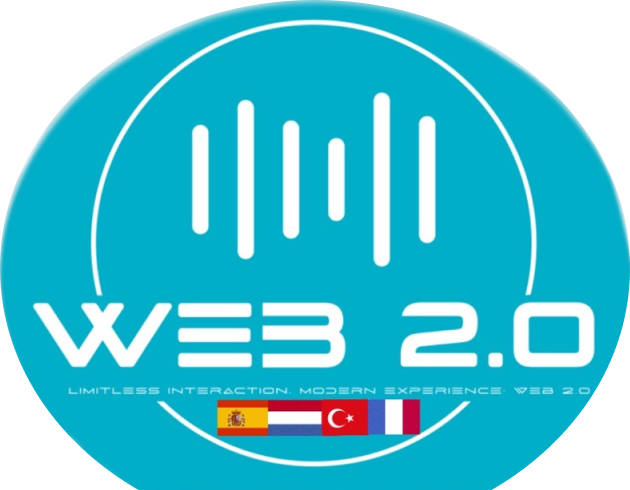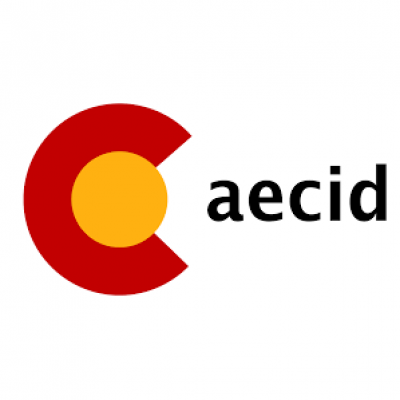Teaching
Activities
Canva
Canva is a graphic design platform that allows users to create a wide range of visual content, including social media graphics, presentations, posters, documents, and other visual content. It provides a drag-and-drop interface along with a vast library of templates, images, illustrations, icons, and fonts, making it accessible to both beginners and professionals. Canva offers both free and paid subscription plans, with the paid plans providing additional features and assets. It’s widely used by individuals, businesses, educators, and organizations for various design needs.
StoryJumper is an online platform that allows users to create, publish, and share their own children’s books. It provides tools for designing pages, adding text, illustrations, and even importing your own images. StoryJumper is popular among educators, parents, and aspiring authors who want to create personalized stories for children.
Key features of StoryJumper include:
Book creation: Users can create their own children’s books from scratch or choose from a library of pre-made templates and story starters.
Illustrations and images: StoryJumper offers a wide selection of illustrations and images that users can use to enhance their stories. Users can also upload their own images to personalize their books.
Text customization: Users can add, edit, and format text to create engaging narratives for their books. They can choose from various fonts, sizes, colors, and styles to customize the appearance of the text.
Publishing and sharing: Once a book is completed, users can publish it online and share it with others. Books can be shared via email, social media, or embedded on websites.
Collaboration: StoryJumper allows multiple users to collaborate on a book project, making it ideal for classroom activities or group projects.
Educational resources: StoryJumper offers educational resources and lesson plans for educators who want to incorporate book creation into their curriculum. It can be used to promote literacy, creativity, and digital storytelling skills.
Overall, StoryJumper provides a user-friendly platform for creating and sharing children’s books, making it accessible to educators, parents, and aspiring authors who want to inspire young readers with their stories.
Google Classroom & Flipped Classroom
Google Classroom and the flipped classroom model are two distinct but complementary educational approaches.
Google Classroom: Google Classroom is a platform developed by Google that facilitates communication, collaboration, and organization in the classroom. It allows teachers to create digital classrooms, distribute assignments, provide feedback, and communicate with students, all within a centralized online platform. Students can access course materials, submit assignments, participate in discussions, and receive feedback from their teachers. Google Classroom streamlines many aspects of classroom management and enhances the learning experience by providing a digital hub for teaching and learning activities.
Flipped Classroom: The flipped classroom model is an instructional strategy where traditional teaching methods are reversed or “flipped.” In a flipped classroom, students engage with instructional content, such as lectures or presentations, outside of the classroom, typically through videos, readings, or other online resources. Class time is then used for active learning activities, such as discussions, problem-solving, projects, and group work, where students can apply what they’ve learned and receive guidance and feedback from the teacher. The flipped classroom model aims to promote deeper learning, critical thinking, and collaboration by maximizing class time for interactive and hands-on activities.
While Google Classroom provides a platform for organizing and managing classroom activities, including those associated with a flipped classroom approach, it is not inherently tied to any specific instructional model. Teachers can use Google Classroom to support various teaching methods, including the flipped classroom model, by sharing instructional materials, facilitating discussions, and providing feedback to students. In this way, Google Classroom can complement and enhance the implementation of a flipped classroom approach by providing a digital infrastructure for communication, collaboration, and resource distribution.
Google Forms
Google Forms is a free tool provided by Google that allows users to create surveys, quizzes, questionnaires, and other types of forms. It offers a simple and intuitive interface for designing forms and collecting responses. Here are some key features of Google Forms:
Easy form creation: Users can create forms by adding various types of questions, such as multiple-choice, short answer, paragraph, dropdown, checkbox, and more. They can also add titles, descriptions, images, and videos to their forms.
Customization options: Google Forms provides several customization options, including themes, fonts, and colors, allowing users to personalize the appearance of their forms.
Collaboration: Multiple users can collaborate on a form simultaneously, making it suitable for group projects and team surveys. Users can share forms with collaborators via email or by generating a link.
Automatic response collection: Responses submitted through Google Forms are automatically collected and organized in a Google Sheets spreadsheet. Users can view, analyze, and export response data directly from Google Sheets.
Integration with other Google apps: Google Forms integrates seamlessly with other Google apps such as Google Drive, Gmail, and Google Calendar. Users can easily access their forms, share them with others, and receive notifications about new responses.
Advanced features: Google Forms offers several advanced features, such as response validation, question branching (also known as “skip logic”), and the ability to add collaborators as form editors or viewers.
Google Forms is widely used by individuals, businesses, educators, and organizations for various purposes, including collecting feedback, conducting surveys, organizing events, registering participants, and creating quizzes and assessments. Its user-friendly interface, robust features, and seamless integration with other Google apps make it a popular choice for form creation and data collection.
Kahoot
Kahoot is an interactive learning platform that allows educators and presenters to create, share, and play learning games, quizzes, and surveys. It’s designed to make learning engaging and fun, particularly in educational settings. Here are some key features of Kahoot:
Game creation: Educators and presenters can create their own interactive quizzes, surveys, and discussions using the Kahoot platform. They can add multiple-choice questions, true/false questions, polls, and surveys, as well as images and videos to enhance engagement.
Game playing: Once a Kahoot game is created, it can be played live in a classroom or any group setting. Players use their smartphones, tablets, or computers to join the game by entering a unique game PIN. The game is displayed on a shared screen, and players answer questions in real-time to earn points.
Competitiveness and engagement: Kahoot games are designed to be fast-paced and competitive, encouraging active participation and engagement among players. Leaderboards and points systems motivate players to answer questions quickly and accurately.
Learning outcomes: Kahoot can be used to assess learning outcomes, reinforce concepts, review material, or simply as a fun way to engage students. Educators can access detailed reports and analytics after each game to track student performance and identify areas for improvement.
Accessibility and inclusivity: Kahoot is accessible to a wide range of learners, including those with disabilities, as it supports various devices and can be customized to accommodate different learning needs.
Community and sharing: Kahoot provides a platform for educators to share their games with a global community of users. Educators can search for and access a vast library of pre-made Kahoot games created by other users, making it easy to find and use content that aligns with their teaching objectives.
Overall, Kahoot is a versatile and engaging tool that promotes active learning and collaboration in both traditional and remote learning environments.
Quizizz
Quizizz is an online platform that allows teachers to create interactive quizzes, surveys, and assessments for their students. It’s often used in educational settings to engage students in learning and to assess their understanding of various topics. Some key features of Quizizz include:
Easy quiz creation: Teachers can create quizzes on any topic using Quizizz’s simple interface. They can add multiple-choice questions, true/false questions, open-ended questions, and more.
Large question bank: Quizizz provides access to a vast library of pre-made quizzes created by other educators. This makes it easy for teachers to find quizzes on specific topics or subjects.
Self-paced learning: Unlike traditional quizzes, Quizizz allows students to complete quizzes at their own pace. They can start and finish quizzes independently, which is especially useful for remote learning or for classrooms with varying learning speeds.
Engaging gameplay: Quizizz incorporates gamification elements such as avatars, leaderboards, and memes to make learning fun and engaging for students.
Real-time feedback: After completing a quiz, students receive immediate feedback on their answers. Teachers can also access detailed reports and analytics to track student progress and identify areas for improvement.
Integration with other platforms: Quizizz integrates seamlessly with learning management systems (LMS) such as Google Classroom and Microsoft Teams, making it easy for teachers to assign quizzes and share results with their students.
Overall, Quizizz is a versatile tool that promotes interactive learning and allows teachers to create engaging assessments for their students.
QR Code
A QR code, or Quick Response code, is a two-dimensional barcode that consists of black squares arranged on a white square grid. QR codes can store various types of information, such as text, URLs, contact information, or other data. They are designed to be scanned by smartphones, tablets, or other devices equipped with a QR code reader, which typically uses the device’s camera to capture the code.
QR codes are widely used for a variety of purposes, including:
Website links: QR codes can be used to direct users to a specific website or webpage. When scanned, the QR code will open the corresponding link in the user’s web browser.
Contact information: QR codes can store contact information such as a person’s name, phone number, email address, and other details. Scanning the QR code can add the contact information directly to the user’s address book.
Product information: QR codes can be placed on product packaging to provide additional information about the product, such as specifications, usage instructions, or customer reviews.
Event registration: QR codes can be used for event registration or ticketing purposes. Attendees can scan their QR code ticket to check in at the event or gain access to certain areas.
Authentication and security: QR codes can be used for authentication or security purposes, such as logging into a secure system or accessing restricted areas.
To create a QR code, you can use various online QR code generators or software tools that allow you to input the desired information and generate a QR code image. Once generated, you can download or print the QR code and use it as needed.


